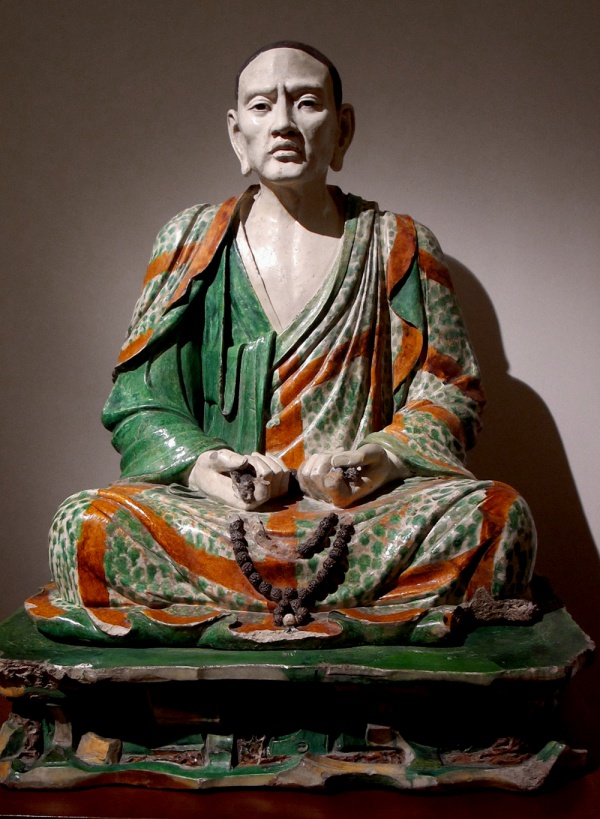Facts About Yixian glazed pottery luohans
Before World War I, a remarkable collection of life-size glazed pottery sculptures depicting luohans (Buddhist disciples) was discovered in caves at I Chou in Yi County, Hebei, just south of Beijing. Believed to date back to the Liao dynasty, these sculptures are considered among the world's most important ceramic artworks. Following their discovery, the statues entered the international art market and were acquired by several Western collections. Initially, eight statues were found, but a significant fragment thought to have been destroyed during World War II in Berlin has recently resurfaced in Russia.
Today, these sculptures are housed in prestigious collections worldwide, including the British Museum in London, the Metropolitan Museum of Art in New York, the Royal Ontario Museum in Toronto, the Museum of Fine Arts in Boston, the Penn Museum in Philadelphia, the Nelson-Atkins Museum of Art in Kansas City, the Musée Guimet in Paris, and a collection in Japan. The figures are believed to represent historical disciples of the Buddha in Chinese tradition.
Each sculpture is noted for its exceptional quality and individuality, suggesting they might be portraits of notable contemporary monks. These naturalistic pseudo-portraits combine idealized features with some deviations from strict realism. The original set likely consisted of 16 or 18 figures, probably intended for display in a "luohan hall" within a temple.
Although initially thought to be from the Tang Dynasty, these sculptures are now believed to date to the early 12th century, during the Jin dynasty. Advances in scientific dating techniques have helped refine their age. The story of their discovery and journey to the art market has been the subject of much scholarly research, though some details remain unclear.
The sculptures were first brought to the attention of the Western art world by Chinese dealers in 1912 and subsequently acquired by various collectors and museums. There have been discrepancies in the reported number of surviving pieces. The sculptures were crafted using glazed terracotta assembled from multiple pieces, with intricate sancai (three- or four-color) glazing. Their large size required internal iron rod supports during firing to prevent warping or sinking.
These sculptures are a significant cultural and artistic treasure, showcasing the extraordinary skill and craftsmanship of Liao dynasty artisans. Their discovery and subsequent journey highlight the challenges and complexities involved in preserving and attributing historical artifacts.

 United States
United States